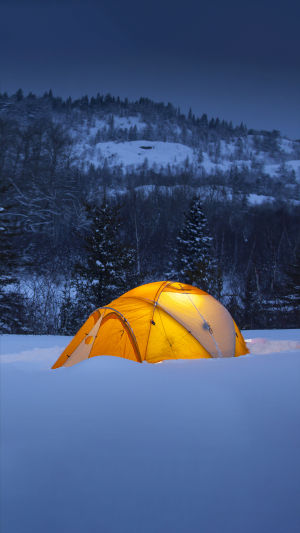Camping during the winter presents unique challenges, with staying warm being paramount.
Cold temperatures coupled with humidity can lead to serious health issues, emphasizing the need for proper warmth to ensure safety and comfort.
This comprehensive guide will delve into practical strategies for staying warm while camping in winter, ensuring your adventure is enjoyable and safe.
<h3>1. Choose an Ideal Camping Location</h3>
Selecting a dry spot sheltered from cold winds is the first step to staying warm. Avoiding damp areas is crucial as moisture can significantly lower your body temperature. Opt for a location shielded from direct wind exposure to minimize its chilling effect on your body.
<h3>2. Optimal Equipment Selection</h3>
<b>1. Four-Season Tent:</b> Invest in a four-season tent with superior thermal insulation and windproof features. Ensure the tent offers ample space to accommodate sleeping bags and other essentials.
<b>2. Sleeping Bag:</b> Choose a sleeping bag with adequate warmth capacity, preferably rated for sub-zero temperatures. Opt for a down or synthetic sleeping bag, both known for their excellent insulation properties.
<b>3. Sleeping Mat:</b> Utilize a sleeping mat not only for comfort but also to prevent the transmission of cold air from the ground. Prioritize sleeping pads with higher R-values for enhanced warmth.
<b>4. Thermal Clothing:</b> Layering thermal Clothing is key. Start with moisture-wicking underwear close to the skin, followed by insulating mid-layers, and finish with a windproof and waterproof outer jacket. Avoid cotton garments as they retain moisture and provide poor insulation.
<b>5. Gloves, Hats, and Scarves:</b> Protect heat-loss-prone areas like the head and hands with appropriate accessories. Wearing gloves and hats effectively reduces heat loss, while a scarf shields you from biting winds.
<b>6. Hot Water Bottle:</b> Enhance warmth in your sleeping bag by placing a hot water bottle inside. This simple trick provides additional heat, ensuring a cozy night's sleep.
<h3>3. Maintain Dryness</h3>
Ensuring both your body and gear remain dry is paramount for warmth retention. Promptly change into dry clothing to prevent excessive heat loss caused by dampness.
Additionally, prioritize keeping the interior of your tent dry by using moisture absorbers or ensuring regular ventilation to minimize moisture buildup.
<h3>4. Adopt a Healthy Diet and Engage in Suitable Activities</h3>
Maintaining optimal health and staying active contribute to warmth retention. Consume a balanced diet with sufficient caloric intake, crucial during outdoor winter adventures.
Hot beverages not only provide extra calories but also contribute to a sense of warmth. Engage in moderate physical activities to enhance blood circulation and maintain body temperature.
<h3>5. Prioritize Safety</h3>
Safety should always be the top priority. Regularly monitor weather forecasts and remain prepared for sudden changes in weather conditions. If weather conditions deteriorate or health concerns arise, promptly evacuate and seek safe shelter to avoid potential hazards.
In conclusion, winter camping necessitates thorough preparation and preventive measures. By implementing the tips above for staying warm, you can ensure your winter camping experience is safe and enjoyable.
From selecting appropriate gear to prioritizing safety, mastering winter camping ensures a memorable outdoor adventure. Embrace the winter wilderness and create lasting memories amidst nature's snowy embrace!





